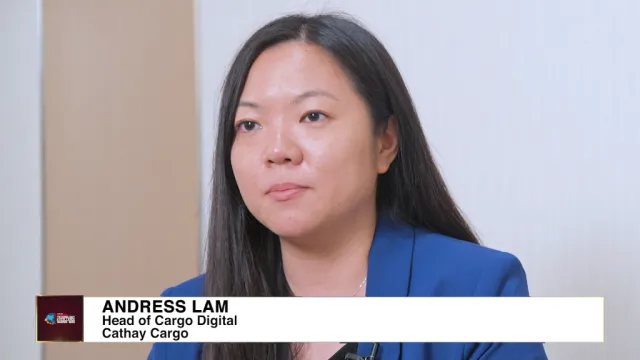China-specific Pitfalls and Mitigation Strategies in Procurement Transformation
By Oliver WymanBy Wen CHEN, Principal at Oliver Wyman
With the evolution of international trade and advancements in domestic industrials, many companies in the Chinese market are turning their attention towards improving their procurement strategies and supplier bases. The companies already have many well-established methodologies for executing these types of strategies, most of which focus on “buying cheaper”, “spending smarter”, and most recently, “adopting digitalised sourcing.” Moreover, the companies’ overarching objectives and approaches are similar and will not be repeated here.
However, in the unpredictable Chinese market, companies implementing these seemingly simple and straightforward changes can encounter many pitfalls. These challenges can result in a company’s inability to implement strategic improvements or, at least, significantly reduce the negative effects of these changes. Based on an in-depth examination of many procurement transformations in China, we believe that it is equally important to both “do the right thing” and “do things right.” In this paper, we will primarily focus on supplier integration, one of the most common and effective initiatives being carried out with regard to procurement transformation.
The common pitfalls of carrying out supplier integration include the following:
• An overly idealised transformation plan
- In the hopes of achieving maximum savings on paper, too many suppliers are eliminated from the short-term transformation plan, resulting in an overly complex integration process. For example, one company that we studied tried to integrate more than 10 suppliers at the same time. However, it didn’t have sufficient resources or capabilities to manage the change, resulting in product-supply shortages and a negative impact on daily operations.
- The perception of a new supplier’s ability and willingness to take on new business is also too optimistic. In China, verbal commitments and even written agreements by suppliers are often not enough in practice, making it difficult to successfully execute transitions.
- When designing a solution, there are multiple data sources that lack consistency in terms of, amongst various parameters, timeframe, quality and standards. This lack of a common baseline makes it impossible to analyse data and drive decisions effectively. For example, when one global company tried to develop a new sourcing strategy, the senior leadership found that no one in the company had a full and clear picture of the procurement volume, value, and frequency. Under this situation, it’s not difficult to imagine how infeasible the effectiveness of the strategies would be.
- Various regions around the world adopt different standards and processes when selecting new suppliers, making it difficult to agree on a final strategy. For example, companies in Europe and the United States may have strict requirements (some that are sometimes even unnecessary) that restrict the paths to business with Chinese suppliers.
• Ineffective and inefficient organisational management
- This can arise when the senior leadership of the company, including the CPO (often located in Europe or the United States), cannot understand the day-to-day work required due to, among various factors, distance, time difference, language barriers and cultural differences.
- Alternatively, the business heads and regional procurement leadership have differences of opinion, or even conflicting agendas or KPIs. These differences lead to complications in the decision-making process, reducing productivity and making it difficult for the execution team to proceed on any necessary actions.
- There are also many problems with supplier relationships: a lack of clearly defined supplier relationship owners, different people in the company connecting with the same suppliers, complex networks of people with different goals and interests, etc. These issues result in the dissemination of incorrect information, even to the point of double-crossing. For example, one global company appointed senior leadership from its headquarters to communicate with suppliers in China. However, the real supplier relationship existed within the local team (who may have had a different agenda). Thus, every time the senior leadership contacted the supplier, they only got very vague commitments without clear plans for implementation.
• Implementation difficulties
- One such difficulty is when the sales department’s shipping demand forecasts are inaccurate, resulting in large amounts of E&O (excess & obsolete) products. This not only causes unnecessary waste, but also, in extreme cases, becomes a major obstacle for supplier transfers.
- The original supplier may also prematurely find out about the company’s intention to transfer their business, causing the supplier to ask for extremely high prices. Besides implementing malicious price increases, the supplier may stop related production, withhold test equipment, or intentionally report large quantities of E&O products.
- During the quotation process, new suppliers may use various tactics to benefit themselves. For example, they may quote assemblies very slowly, quote assemblies one at a time to obscure their overall profits, or offer low quotations on low demand products but significantly increase quotations for high demand products.
- In cases of multi-source procurement, the allocation ratio between suppliers is often unreasonable, and factors such as minimum order quantity (MOQ) and lead time are not fully considered. In addition, planned allocation ratios may be significantly different in practice, which will greatly affect the expected cost reduction and savings.
From the perspective of creating a strategy that benefits all stakeholders, supplier integration seems simple, but the challenges that arise in actual execution can be extremely complicated. If management and communications are not effective, the abovementioned problems may build up significantly and become a “roadblock” in the company’s cost reduction plans.
Based on Oliver Wyman’s experience working on projects in China, we believe there are four key elements for success: strategy, organisation, data, and tracking, to effectively mitigate China-specific procurement pitfalls:
• Strategy
The primary purpose of designing a strategy is to set a realistic goal that considers all potential risks.
When setting up their internal integration/transfer plan, companies should avoid being blindly optimistic. Whilst pursuing immediate cost savings, they should fully consider the potential risks of each supplier, make timely adjustments in scenario planning, and reflect these changes in the overall execution plan. In external communications, especially when negotiating with target suppliers, companies must pay attention to the requirements demanded and commitments made by suppliers. To get contracts for larger orders, many suppliers tend to exaggerate their available capacity and capabilities during negotiations, or selectively avoid discussing more complex but necessary preparations and investments. These factors should be clearly understood and defined in the strategic design, and it is best to implement a written contract as soon as possible.
• Organisation
Whilst the process of integrating suppliers is complicated, the corresponding organisational design should be as simple and straightforward as possible, with clearly defined roles and responsibilities.
Companies must avoid having dual leadership with conflicting interests (e.g. global procurement vs. China procurement). We recommend that a single, local, senior procurement officer be responsible for all local affairs as head of the Chinese region. At the same time, to ensure communication efficiency and information consistency, there should be a coordinator within the company that works as the single point of contact for each supplier. This way, the coordinator has complete control over supplier negotiations and communications. However, in reality, it may be impossible to completely prevent private conversations between suppliers and other people within the company. To counter these situations, the coordinator should work to convince the supplier that they are the best choice to maximise the supplier’s interests and guide them to use the coordinator as a single point of contact.
On the other hand, strong leaders also need effective team members to get work done. If the procurement team has shortcomings in terms of ability, motivation, etc., KPIs and incentives should be adjusted in a timely manner to motivate the internal team as much as possible. If this still has little effect, the company can also consider hiring an external team to assist.
• Data
Accurate and comprehensive data collection and analysis is the best tool to guide project implementation; conversely, missing or inconsistent data can pose major risks for the project.
Effective data management begins with breaking down data barriers across different business units by collecting multi-party data on a unified platform or a common baseline. In particular, the company should pay attention to the unification of standards and terminology to minimise confusion in communications. At the same time, there should be clear ownership of data (e.g. which departments and individuals are responsible for which data inputs, data pulls, data inspections, etc.) to facilitate subsequent review. During the data analysis process, all business units must also use a single data source and the same standards for analysis. At each key decision-making point, documents should be prepared and circulated in a timely manner to get consensus from all relevant parties.
On the other hand, we also need to understand that, in many cases, it is not possible to have a perfect data collection and analysis setup. What is most important is to have a reasonable confidence level (85-95%) and ensure that the entire implementation team has a “single source of truth” to maintain the data.
• Tracking
Due to limited time, an abundance of tasks, multiple sources of information, and constant changes, many companies in China are adopting a high level or one-size-fits-all approach in the process of integrating suppliers. However, if there is no detailed and effective tracking, then a perfect plan may still encounter various pitfalls.
During the project implementation phase, planning should be as detailed as possible, supplemented by various tracking mechanisms and regular core team reviews (in some cases, it may be necessary to do daily reviews). In extreme cases, it may even be necessary to track quotations, BOMs, blueprints, material preparation, equipment preparation, trial production, mass production and other aspects at the SKU level. This will help the team to identify and solve problems as soon as they arise.
In summary, a seemingly simple procurement transformation, if not carefully treated, can become much more of a mess in the complex Chinese market. Only by adopting a forward-looking strategy, along with simple and effective organisation, accurate data collection and analysis, and detailed tracking, can we ensure that procurement transformations create real value for the company.




















 Advertise
Advertise







